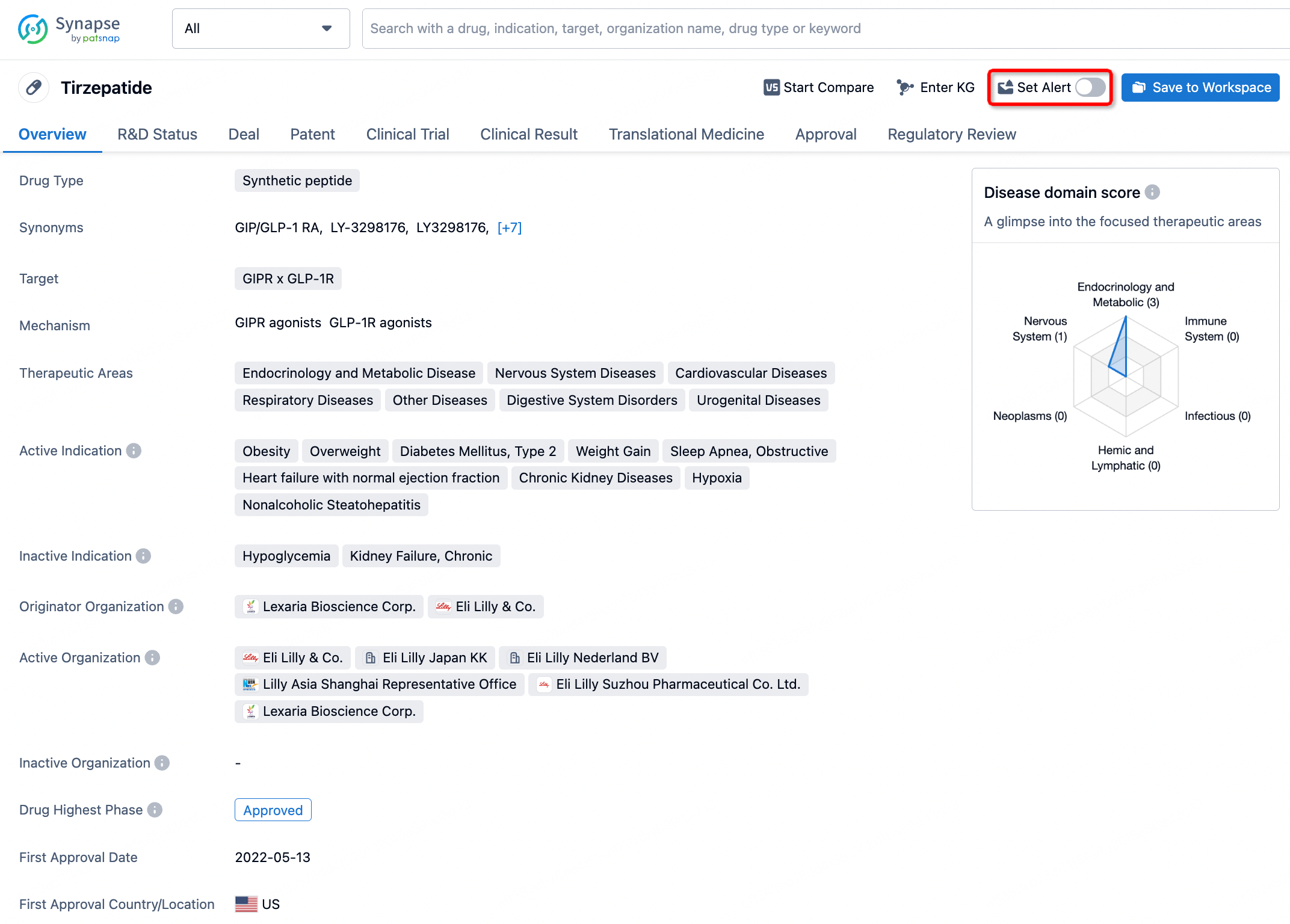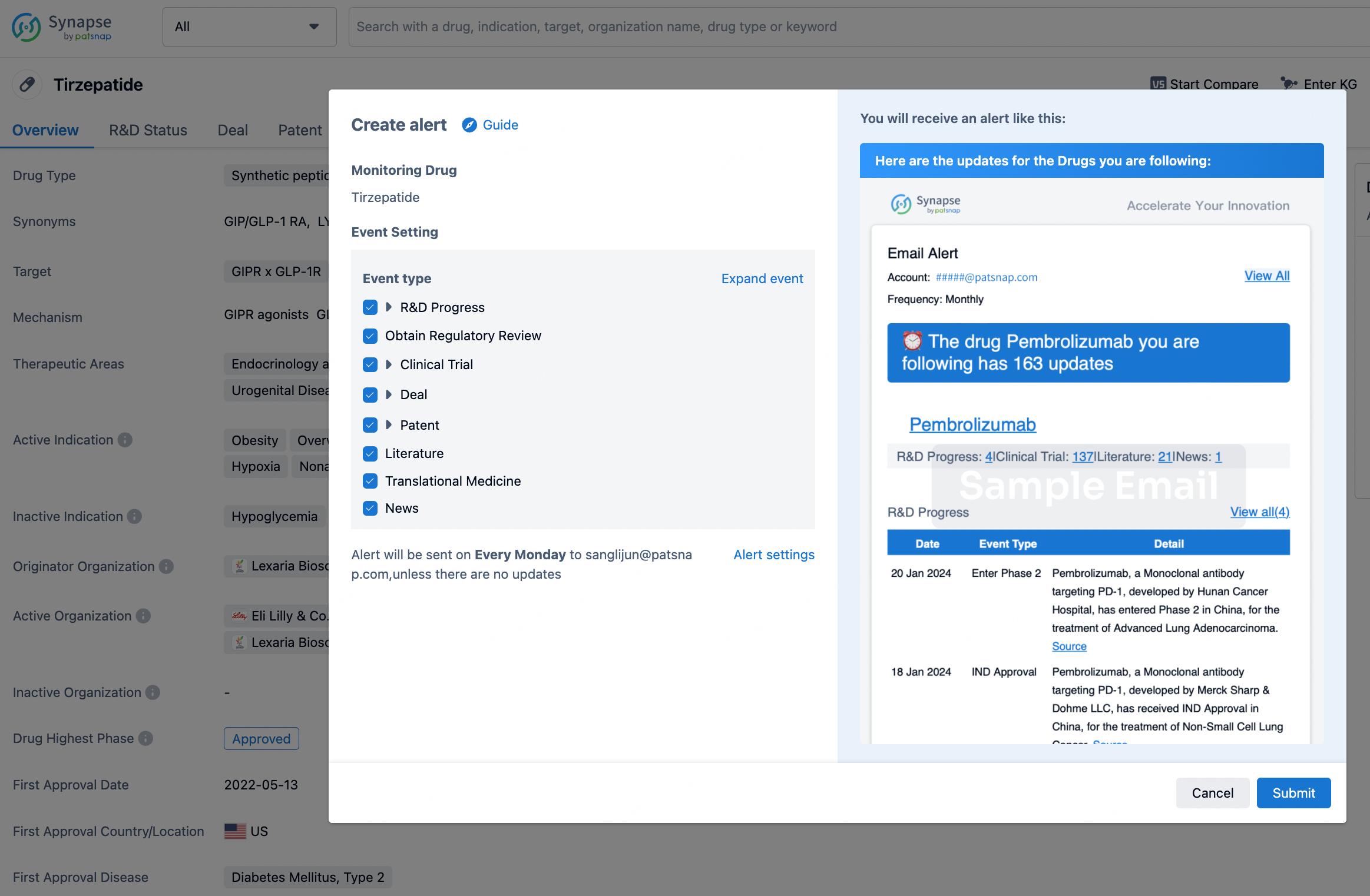Request Demo
What is 2 ,4-Dinitrochlorobenzene used for?
15 June 2024
2,4-Dinitrochlorobenzene (DNCB) is a chemical compound that has found its place in various research and clinical applications. Known for its distinct structure, DNCB features a chlorine atom substituted into the benzene ring along with two nitro groups positioned at the 2 and 4 locations. Although not typically recognized by its drug trade names, it is widely utilized in research settings. DNCB is primarily investigated for its role in immunological studies, particularly its ability to induce a delayed-type hypersensitivity (DTH) response. Various research institutions, including leading universities and medical research centers around the world, have explored its potential applications. As a drug type, DNCB falls under the category of synthetic organic compounds. It is not conventionally used for therapeutic purposes but has been employed in research to understand immune responses and skin sensitization. Its primary indication in research is to provoke a controlled immune response for studying conditions like allergic contact dermatitis. Research progress in recent years has focused on understanding the molecular mechanisms underlying DNCB-induced hypersensitivity, exploring its potential in immunotherapy, and investigating its effects in different models of immune-mediated diseases.
The mechanism of action of 2,4-Dinitrochlorobenzene is rooted in its ability to function as a hapten. Haptens are small molecules that, when combined with larger carrier proteins, can elicit an immune response. DNCB penetrates the skin and binds covalently to proteins, forming a hapten-protein complex. This complex is then recognized as foreign by the immune system, prompting an immune response. In particular, DNCB induces a delayed-type hypersensitivity response, which is a form of cell-mediated immunity. Upon initial exposure to DNCB, antigen-presenting cells, such as Langerhans cells in the skin, process and present the hapten-protein complex to T cells. This leads to the activation and proliferation of specific T cells. Upon subsequent exposure to DNCB, these sensitized T cells recognize the hapten-protein complex and release cytokines, leading to an inflammatory response. This mechanism is crucial for understanding the immune response triggered by DNCB and forms the basis for its use in research studies exploring allergic contact dermatitis and other immune-mediated conditions.
The administration of 2,4-Dinitrochlorobenzene in a research or clinical setting typically involves topical application. DNCB is applied directly to the skin, often in the form of a solution or cream. The concentration and frequency of application can vary depending on the specific experimental protocol or clinical study. In research settings, a common method involves applying DNCB to a small patch of skin, usually on the forearm or back, to induce sensitization. Following an initial sensitization phase, a challenge phase may be conducted, where DNCB is reapplied to assess the immune response. The onset time for the hypersensitivity reaction can vary, but it typically occurs within 24 to 48 hours after re-exposure to DNCB. This delayed response is characteristic of the type IV hypersensitivity reaction mediated by T cells. It is important to follow specific guidelines and protocols when using DNCB to ensure accurate and reproducible results in research studies.
Like any chemical compound that interacts with the immune system, 2,4-Dinitrochlorobenzene can have side effects. The most common side effect is skin irritation at the site of application, which can manifest as redness, itching, and swelling. In some cases, individuals may develop more severe allergic reactions, including blistering or ulceration of the skin. Due to its potent sensitizing properties, DNCB is contraindicated in individuals with a history of severe allergic reactions or dermatitis. It should also be used with caution in individuals with compromised skin integrity or pre-existing skin conditions. Additionally, DNCB should not be used in pregnant or breastfeeding women due to the lack of sufficient safety data. Proper protective measures, such as wearing gloves and using appropriate ventilation, should be taken when handling DNCB to minimize the risk of exposure and adverse effects.
When considering the use of 2,4-Dinitrochlorobenzene, it is important to be aware of potential drug interactions. Although DNCB is primarily used in research and not as a therapeutic drug, it can still interact with other substances. For instance, concurrent use of topical corticosteroids or immunosuppressive agents may alter the immune response to DNCB and affect the outcomes of research studies. These substances can potentially reduce the inflammatory response induced by DNCB, leading to false-negative results in studies assessing hypersensitivity reactions. Researchers should carefully consider the use of any medications or substances that could modulate the immune system when designing experiments involving DNCB. Furthermore, it is important to document and report any concurrent medications or treatments used by study participants to account for potential interactions. By understanding and managing these interactions, researchers can ensure the accuracy and reliability of their findings when using 2,4-Dinitrochlorobenzene in immunological studies.
The mechanism of action of 2,4-Dinitrochlorobenzene is rooted in its ability to function as a hapten. Haptens are small molecules that, when combined with larger carrier proteins, can elicit an immune response. DNCB penetrates the skin and binds covalently to proteins, forming a hapten-protein complex. This complex is then recognized as foreign by the immune system, prompting an immune response. In particular, DNCB induces a delayed-type hypersensitivity response, which is a form of cell-mediated immunity. Upon initial exposure to DNCB, antigen-presenting cells, such as Langerhans cells in the skin, process and present the hapten-protein complex to T cells. This leads to the activation and proliferation of specific T cells. Upon subsequent exposure to DNCB, these sensitized T cells recognize the hapten-protein complex and release cytokines, leading to an inflammatory response. This mechanism is crucial for understanding the immune response triggered by DNCB and forms the basis for its use in research studies exploring allergic contact dermatitis and other immune-mediated conditions.
The administration of 2,4-Dinitrochlorobenzene in a research or clinical setting typically involves topical application. DNCB is applied directly to the skin, often in the form of a solution or cream. The concentration and frequency of application can vary depending on the specific experimental protocol or clinical study. In research settings, a common method involves applying DNCB to a small patch of skin, usually on the forearm or back, to induce sensitization. Following an initial sensitization phase, a challenge phase may be conducted, where DNCB is reapplied to assess the immune response. The onset time for the hypersensitivity reaction can vary, but it typically occurs within 24 to 48 hours after re-exposure to DNCB. This delayed response is characteristic of the type IV hypersensitivity reaction mediated by T cells. It is important to follow specific guidelines and protocols when using DNCB to ensure accurate and reproducible results in research studies.
Like any chemical compound that interacts with the immune system, 2,4-Dinitrochlorobenzene can have side effects. The most common side effect is skin irritation at the site of application, which can manifest as redness, itching, and swelling. In some cases, individuals may develop more severe allergic reactions, including blistering or ulceration of the skin. Due to its potent sensitizing properties, DNCB is contraindicated in individuals with a history of severe allergic reactions or dermatitis. It should also be used with caution in individuals with compromised skin integrity or pre-existing skin conditions. Additionally, DNCB should not be used in pregnant or breastfeeding women due to the lack of sufficient safety data. Proper protective measures, such as wearing gloves and using appropriate ventilation, should be taken when handling DNCB to minimize the risk of exposure and adverse effects.
When considering the use of 2,4-Dinitrochlorobenzene, it is important to be aware of potential drug interactions. Although DNCB is primarily used in research and not as a therapeutic drug, it can still interact with other substances. For instance, concurrent use of topical corticosteroids or immunosuppressive agents may alter the immune response to DNCB and affect the outcomes of research studies. These substances can potentially reduce the inflammatory response induced by DNCB, leading to false-negative results in studies assessing hypersensitivity reactions. Researchers should carefully consider the use of any medications or substances that could modulate the immune system when designing experiments involving DNCB. Furthermore, it is important to document and report any concurrent medications or treatments used by study participants to account for potential interactions. By understanding and managing these interactions, researchers can ensure the accuracy and reliability of their findings when using 2,4-Dinitrochlorobenzene in immunological studies.
How to obtain the latest development progress of all drugs?
In the Synapse database, you can stay updated on the latest research and development advances of all drugs. This service is accessible anytime and anywhere, with updates available daily or weekly. Use the "Set Alert" function to stay informed. Click on the image below to embark on a brand new journey of drug discovery!
AI Agents Built for Biopharma Breakthroughs
Accelerate discovery. Empower decisions. Transform outcomes.
Get started for free today!
Accelerate Strategic R&D decision making with Synapse, PatSnap’s AI-powered Connected Innovation Intelligence Platform Built for Life Sciences Professionals.
Start your data trial now!
Synapse data is also accessible to external entities via APIs or data packages. Empower better decisions with the latest in pharmaceutical intelligence.


